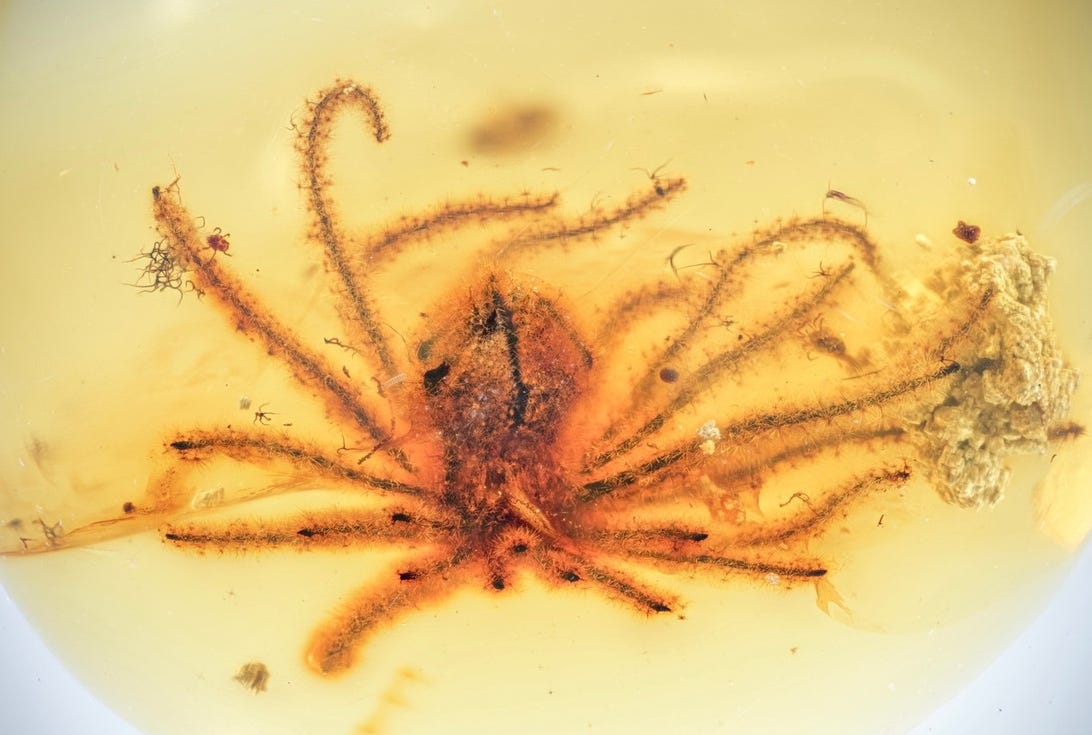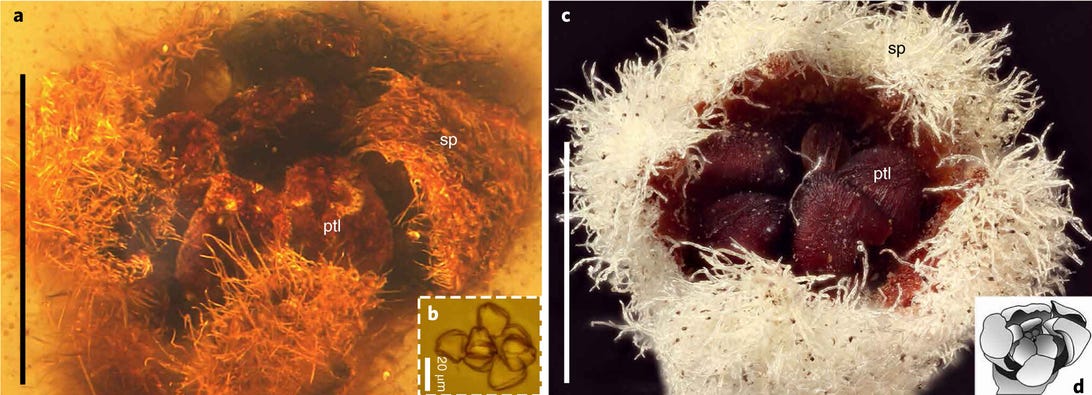These exquisite flowers sealed in 100 million-year-old amber would have fascinated Darwin

This 100 million-year-old flower preserved in amber is a nearly identical match to a modern Phylica flower.
Chao Shi, et al./Nature Plants
Go to South Africa. Find some flowers from the genus Phylica. Marvel at them and think back to nearly 100 million years ago when flowers very much like those would have been blooming at the feet of dinosaurs.
A study published in the journal Nature Plants this week looks at two remarkable flowers preserved in ancient amber from Myanmar. One of the flowers looks identical to modern ones that grow today in South Africa. The study was led by researchers from the Qingdao University of Science and Technology in China.
The flowers tell a story of survival in harsh conditions. “The fossils were found alongside long-extinct burned plants, pointing to wildfires being an important aspect of early flower evolution,” the Open University said in a statement Monday. Robert Spicer, a paleobotany specialist and emeritus professor with the university, is a co-author of the paper.
The modern relatives of these ancient flowers lead a similar lifestyle where they’re adapted to surviving wildfires.
The researchers named the two species Phylica piloburmensis and Eophylica priscastellata. Spicer said the preserved specimens show “that early flowers were not primitive as many people suppose.”
One of the flowers in the study (Eophylica priscastellata on the left) has similarities to the modern flower seen on the right.
Chao Shi, et al./Nature Plants
The Phylica piloburmensis flower in particular is a match for modern-day Phylica flowers. The paper describes the other specimen as a member of “a sister group to Phylica.”
Researchers are working on filling in the history of flowers. It can be tough to find good specimens from the Cretaceous era, which makes these beautifully ensconced flowers all the more valuable. The team was even able to zoom in on grains of pollen captured in the amber.

This extreme close-up view shows pollen grains as part of a comparison of the amber-entrapped Phylica piloburmensis (left) with the modern-day flower Phylica axillaris (right).
Chao Shi, et al./Nature Plants
The Open University highlighted an interesting piece of history in its discussion of the flowers. Famed scientist Charles Darwin seemed to have been vexed by what the university calls “the sudden appearance of flowering plants as fossils in middle Cretaceous time.” He likely would have been fascinated by these amber specimens and their connection to wildfires.
Said Spicer, “If Darwin had had access to such fossils his ‘abominable mystery,’ as he called the origin of flowering plants, may have been less perplexing as fire was a key component in shaping the evolution of flowers.”
A spider’s erection, and other cool things trapped in amber
See all photos
For all the latest world News Click Here

